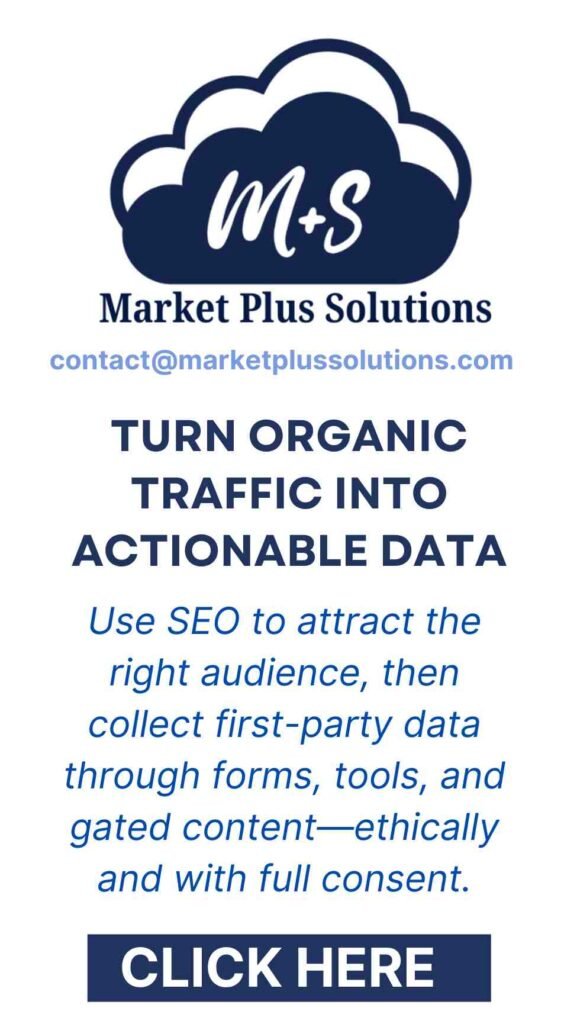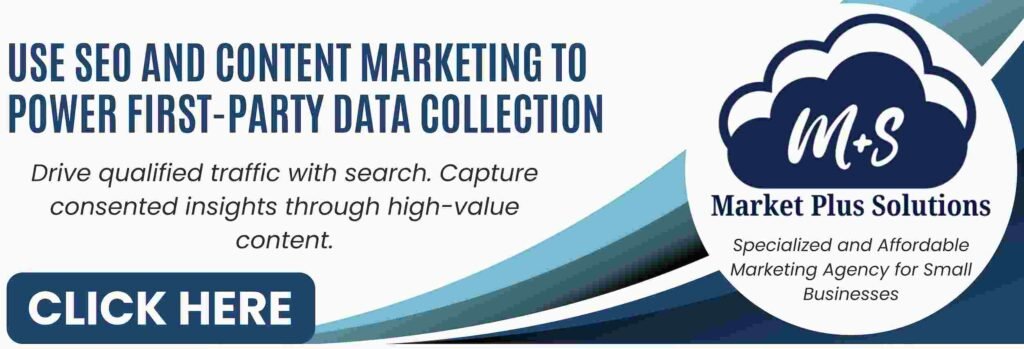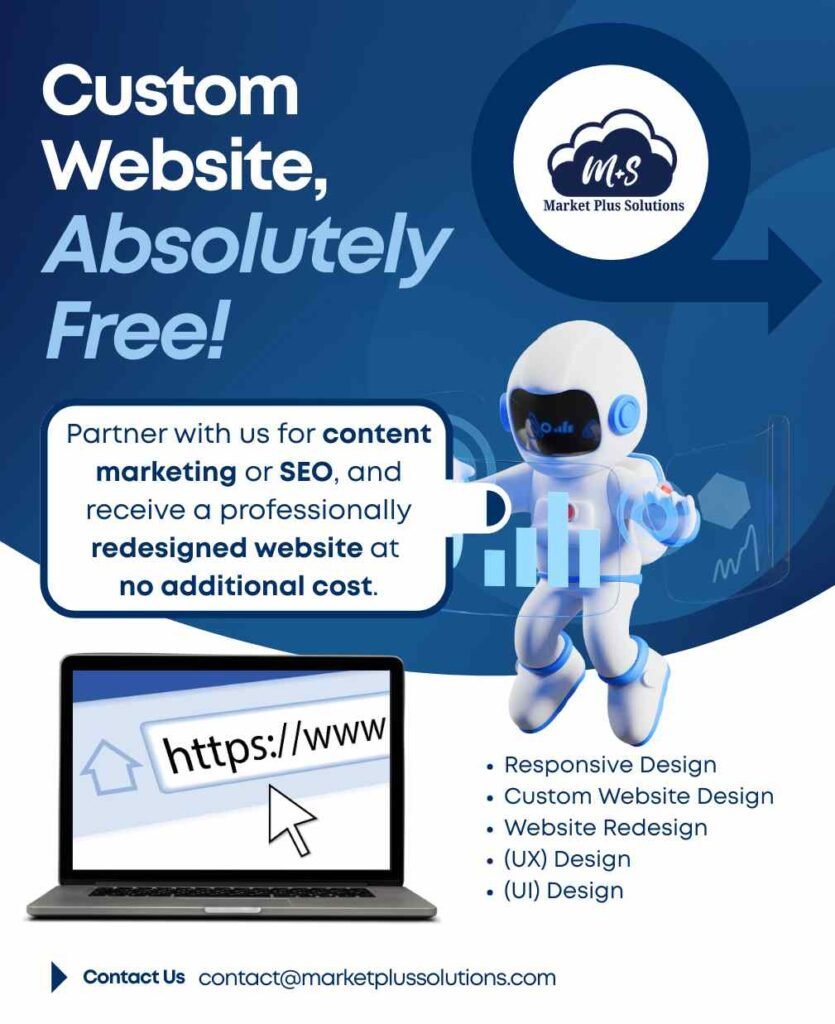Why First-Party Data Is the Foundation of Modern Marketing
Third-party data is becoming obsolete – there is no question about it.
Cookies are being phased out, and their alternatives are neither reliable nor future-proof.
Privacy regulations and browser restrictions continue to limit how third-party data can be collected and used.
That’s why knowing how to collect first-party data—ethically and effectively—is no longer optional.
Unlike third-party sources, first-party data is stable and trustworthy: It’s accurate, permission-based, and most importantly, it’s yours, and you control it. (Click here to learn more about first-party data marketing)
So, if you’re still using third-party data to guide your campaigns or understand user behavior, it’s time to reconsider.
Today’s performance depends on strong customer data strategies—and those start with what you collect directly.
If you’re still depending on third-party data to understand your audience or drive campaigns, this guide is your signal to rethink your approach. We’ll walk you through how to collect first-party data effectively—without compromising on privacy or user experience.
Companies that use first-party data get up to 8 times more return on their marketing spend, cut customer acquisition costs by over 25%, and see nearly 3 times more revenue growth. (avaus)
Here’s what you’ll learn:
- Where to collect first-party data without disrupting the user experience
- The first-party data collection tools modern teams depend on
- How to apply GDPR data collection best practices and comply with global privacy standards
- Practical, scalable data collection methods for marketing that respect consent and user intent
We’ll also clarify the difference between first-party data vs third-party data, touch on zero-party vs first-party data, and explore how to apply your insights through data-driven personalization (Learn more about SaaS SEO Services built for Startups and Small SaaS Teams).
What Is First-Party Data and Why It Matters
First-party data is the most valuable data you can collect—because it comes straight from your audience.
It’s information users share directly and voluntarily through your owned channels.
That includes everything from newsletter sign-ups, demo requests, and webinar registrations to in-app behavior tracking, support conversations, user feedback, and even offline touchpoints like event check-ins or consultations.
There are no middlemen. No data brokers.
Salesforce’s State of Marketing report shows that 61% of marketers still rely on third-party data, down from 75% in 2022, despite growing privacy concerns. Many still struggle with data unification, personalization, and AI performance, with only 31% confident in their ability to connect customer data across platforms. (okdesign)
Just real, consent-based insight from people who have chosen to engage with your brand. So, if you want to know how to collect first-party data effectively, you need to start by understanding what sets it apart.
Here’s how it compares to other types of data:
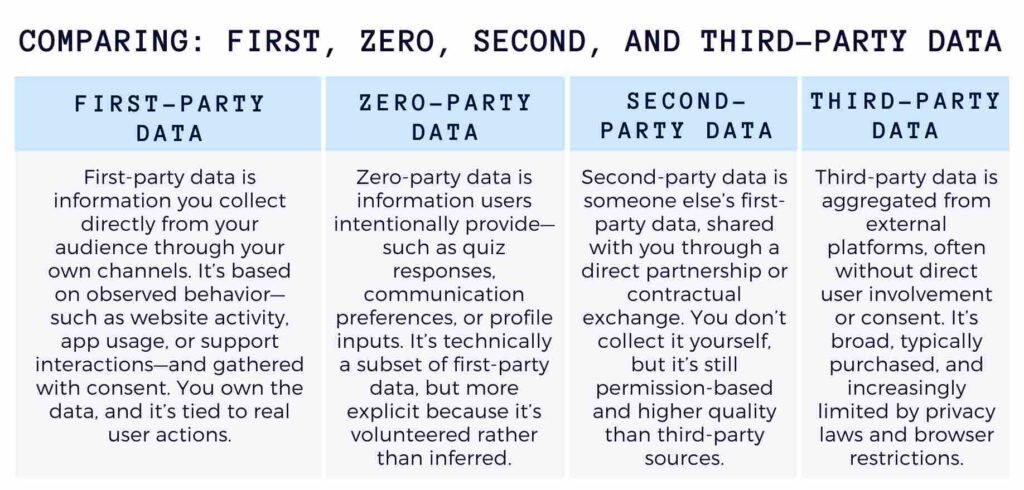
The key distinction?
First-party data is collected by you, with consent, and based on real user behavior—not third-party assumptions. That makes it more accurate, more secure, and more aligned with privacy-compliant data collection standards.
So, in an era shaped by cookieless tracking and evolving regulations, this data isn’t just useful—it’s essential. Compared to external sources, it gives you more control, better targeting, and long-term relevance (Learn more about Vertical SaaS Marketing Agencies here).
H2: Where to Collect First-Party Data: Top Collection Points
You don’t need to follow users across the internet to understand them.
You just need to observe how they interact with you. If you want to know how to collect first-party data, it starts with the touchpoints you already control. These are the most effective sources:
1. Your Website
Your website is one of the most reliable first-party data collection tools.
Every page view, click, and scroll is a behavioral signal. With tools like Google Analytics 4 (GA4) and proper consent-based marketing practices in place, you can gather meaningful insights without violating privacy.
Embed contact forms, live chat, gated resources, or short surveys to turn passive visits into active engagement. This is one of the most scalable data collection methods for marketing—and one of the most underused (Explore our website design and development page here).
2. Email Sign-Ups and Newsletters
Opt-in forms offer some of the most dependable data. When users subscribe, they provide both contact information and intent. The key is to make the value clear: early access, exclusive content, or targeted updates. Done right, this supports privacy-compliant data collection while improving lead quality.
3. Lead Forms and Gated Content
Whether it’s a webinar, demo request, or downloadable report, gated content gives users a reason to share their data. Go beyond email addresses—use forms to gather job titles, industries, or pain points. Just keep it minimal. Use progressive profiling to collect more over time without creating friction (Click here to explore our SaaS Content Marketing Services).
4. Product and App Usage
For SaaS companies, product usage is one of the most accurate data sources available. Feature adoption, frequency of use, and in-app behavior reveal what customers value most.
Tools like Mixpanel and Amplitude help track this without relying on third-party cookies, making it ideal for a cookieless tracking environment.
5. Customer Feedback and Support Interactions
Support tickets, feedback forms, and survey responses give you insight into customer sentiment and needs. When integrated with your CRM or CDP, these inputs form a more complete user profile. It’s one of the most overlooked yet powerful inputs for customer data strategies.
6. Mobile Apps and In-Product Feedback
If you offer a mobile experience, don’t ignore it. In-app prompts, event tracking, and usage analytics offer a steady stream of actionable behavior data. Just ensure your SDK is configured for GDPR data collection best practices and clearly communicates consent.
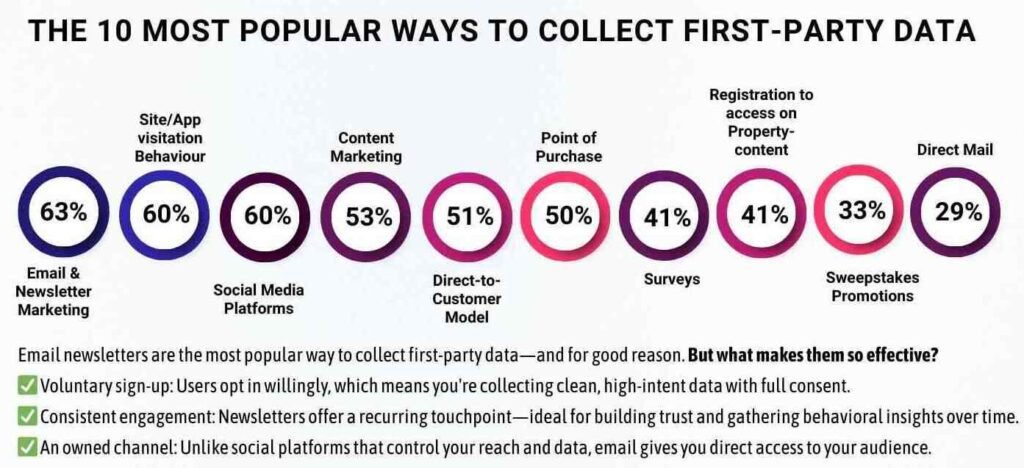
First-Party Data Collection Tools to Use in 2025
Learning how to collect first-party data isn’t just about knowing where to look—it’s about using the right tools to gather, manage, and apply that data effectively. The platforms you choose will determine whether your data drives results or ends up in disconnected systems.
(Explore SaaS Content Strategy: ToFu, MoFu, and BoFu Funnel That Converts)
Here are the first-party data collection tools that modern teams rely on in 2025:
1. Customer Relationship Management (CRM) Systems
Platforms like HubSpot and Salesforce go beyond contact management. They track engagement across the entire customer journey—emails, form fills, sales conversations—and unify this data into a single, accessible view. For many teams, CRMs are the operational center of their customer data strategies.
2. Customer Data Platforms (CDPs)
CDPs like Segment, Klaviyo, and Bloomreach collect behavioral data across web, email, app, and support touchpoints. They consolidate this into unified profiles and make it actionable across your marketing channels. CDPs also support cookieless tracking, enabling reliable targeting without relying on third-party data.
3. Consent Management Platforms
No first-party data strategy is complete without privacy-compliant data collection. Tools like OneTrust and Cookiebot help you manage user consent transparently and at scale. They support GDPR data collection best practices and ensure you stay compliant with evolving regulations like CCPA and LGPD.
4. On-Site Behavior and UX Analytics
Understanding how users interact with your site is key to refining your data collection methods for marketing. Tools like Hotjar and Microsoft Clarity track session behavior, identify drop-off points, and surface UX issues. These insights help optimize form placement, content gating, and engagement flows—without guessing.
5. Email Marketing Platforms
Platforms like Mailchimp and ConvertKit let you collect and segment data based on how subscribers interact with your content. They’re not just for sending emails—they’re central to data-driven personalization when integrated with your CRM or CDP.
These tools aren’t just checkboxes—they form the operational backbone of a modern, ethical, and effective approach to how to collect first-party data. Each supports a different stage of the process: from collection and consent, to unification and activation.
Privacy-First: How to Collect Data Ethically and Legally
First-party data only delivers value when it’s built on trust.
In 2025, privacy is no longer just about compliance—it’s a core part of your brand’s credibility. Failing to offer transparency or obtain clear consent isn’t just risky. It’s a fast way to erode user trust.
If you want to master how to collect first-party data responsibly, these are the essentials:
1. Know the Laws: GDPR, CCPA, and Beyond
Privacy regulations such as GDPR (Europe), CCPA (California), and LGPD (Brazil) are enforceable and strict. Whether you’re collecting behavioral data or running lead gen forms, these frameworks define what qualifies as privacy-compliant data collection.
At a minimum, you should:
- Clearly explain what data is being collected and why
- Obtain explicit consent before any tracking begins
- Provide opt-out and data deletion options
- Maintain records of user preferences
Note: These laws apply based on where the user is located—not where your company is based.
2. Implement Consent Banners Correctly
Consent banners are everywhere, but few are set up correctly. For your consent-based marketing practices to be valid:
- Offer real options—accept, reject, or customize
- Prevent non-essential cookies from loading before consent
- Link to a clear, accessible privacy policy
Tools like OneTrust and Cookiebot can streamline this process and integrate with analytics platforms like GA4, supporting GDPR data collection best practices at scale.
3. Make Opt-In Forms Clear and Useful
If you’re using forms to collect user data, transparency is non-negotiable. Tell users exactly what they’re signing up for:
Example: “Subscribe to weekly SaaS growth tips. No spam, ever.”
Only 16% of marketers are currently leveraging zero-party data, indicating a significant opportunity for growth in this area. (supermetrics)
Also, provide a reason to opt in—whether it’s exclusive content, early access, or personalized recommendations. This approach supports both data-driven personalization and higher-quality engagement (Click here to explore our content marketing services for small businesses)
4. Keep Your Privacy Policy Updated
Your privacy policy is not just legal boilerplate. It’s a reflection of your company’s ethics—and a requirement for privacy-compliant data collection.
Make sure your policy:
- Clearly lists the types of data you collect
- Explains how data is used, stored, and secured
- Provides a contact for data-related requests
- Matches your real-world practices—no generic templates
Strong privacy practices don’t slow you down—they give you the foundation to scale responsibly. Knowing how to collect first-party data in a way that earns trust will set you apart in a world moving toward cookieless tracking and higher standards for transparency.
First-Party Data Collection Best Practices
Knowing how to collect first-party data is not just about where you gather it—or what you gather.
It’s about execution. The difference between a noisy form and a scalable system comes down to how the data is collected, managed, and used. These best practices will help you collect better data—with less friction and greater trust.
1. Always Request Consent — and Offer Something in Return
Data collection should always be a transparent value exchange. If you’re asking for someone’s email, role, or company information, offer something meaningful in return: a toolkit, a detailed report, or gated webinar access. And make your intent clear—explain how their data will be used. This is the foundation of consent-based marketing and essential for privacy-compliant data collection.
2. Start Small, Then Scale
Avoid the mistake of asking for too much information upfront. If someone’s reading a blog post, a simple name and email is enough. As they engage further, use progressive steps to capture more data. Smaller requests lower friction—and often result in more accurate responses.
3. Use Progressive Profiling to Collect Over Time
Progressive profiling allows you to gather information gradually, based on user behavior and intent. Ask for a job title during webinar sign-up. Ask about challenges or interests in a follow-up survey. This approach builds detailed profiles over time, without overwhelming users—making it one of the most effective data collection methods for marketing.
4. Give People a Reason to Share
Users are more likely to share personal information when there’s something in it for them. Offer incentives that align with their intent:
- Personalized recommendations or content
- Access to premium toolkits or templates
- Free trials or early feature access
- Invitations to live or limited-access events
This not only encourages sharing, but also supports data-driven personalization later in the journey.
5. Test, Measure, Refine
Data collection isn’t static. Test your forms—field length, placement, tone. Measure completion rates and drop-offs. Track which channels and first-party data collection tools yield the most reliable data. Optimize continuously. A strong first-party approach adapts to audience behavior, product changes, and evolving customer data strategies.
Next Steps: What to Do After Collection
Knowing how to collect first-party data is only the first step.
(Learn more about Content Marketing Thought Leadership here)
But the value lies in what happens next—how you store it, clean it, and activate it to support meaningful experiences and business outcomes. Here’s how to make your data work:
1. Store It Securely
Security is foundational to privacy-compliant data collection. Your storage setup should support both scalability and protection:
- Use CRMs like HubSpot or Salesforce to track contact-level interactions
- Use CDPs like Segment or Klaviyo to unify data across web, product, and support channels
- Use encrypted cloud storage for raw or structured datasets
Ensure access controls, automated backups, and regulatory compliance are in place. Data integrity starts with secure infrastructure.
2. Clean and Enrich Your Data
Poor-quality data undermines even the best customer data strategies. Before using any dataset:
- Remove duplicates and outdated records
- Standardize key fields like job titles and phone numbers
- Use enrichment tools like Clearbit or Apollo to fill gaps
- Tag and categorize based on actual behavior—not just static form inputs
Clean data is essential for accurate segmentation and automation. Without it, even the best data collection methods for marketing fall short.
3. Segment Your Audiences and Personalize
The real strength of first-party data is in its depth. Use it to build segments based on:
- Behavior (e.g., feature usage, email engagement)
- Lifecycle stage (e.g., trial, active, dormant)
- Firmographics (e.g., industry, company size, job role)
Then apply data-driven personalization to match message to context. For example:
- Send onboarding content to new users
- Recommend upgrades to high-frequency users
- Trigger retargeting flows for feature drop-off or inactivity
Companies utilizing first-party data for key marketing functions have achieved up to a 2.9x increase in revenue and a 1.5x improvement in cost savings, demonstrating its effectiveness in driving business outcomes. (shopify)
Personalization powered by accurate segmentation turns data into performance.
4. Measure the ROI of Your First-Party Data Strategy
Data is only valuable if it drives measurable outcomes. Track:
- Lead-to-customer conversion rates
- Email open and click-through rates by audience segment
- Retention and churn patterns
- Revenue generated from personalized campaigns
Tie your efforts back to business goals. When you show impact, your investment in first-party data collection tools and practices won’t need justification—the numbers will speak for themselves.
By now, you understand how to collect first-party data. But turning data into growth means managing it with intention—securely, ethically, and strategically.
Conclusion: Build Smarter, Not Just Bigger
First-party data isn’t a fallback—it’s the future of marketing.
As third-party cookies disappear and privacy-compliant data collection becomes the standard, businesses that know how to collect first-party data—and use it well—are the ones that will lead.
This isn’t just about compliance.
It’s about building a marketing engine that’s more accurate, more resilient, and directly tied to real behavior. First-party data gives you something third-party sources never could: control, clarity, and long-term competitive advantage. But collecting it isn’t enough.
It’s how you store it, clean it, and apply it that determines the outcome. The organizations that treat data as a strategic asset—not just a byproduct—are the ones building systems that scale.
Looking to turn collection into real performance? Start here:
Because in 2025 and beyond, the real difference isn’t just first-party data vs third-party data—it’s whether you know how to make your data matter.



